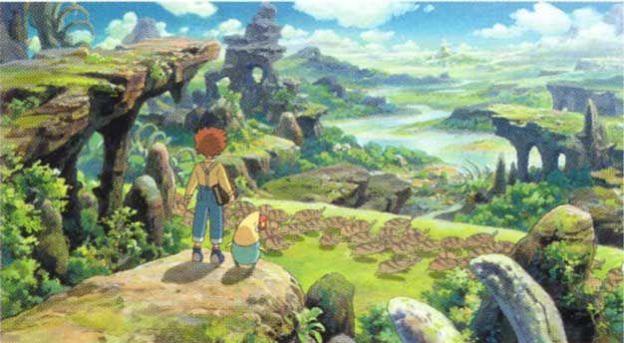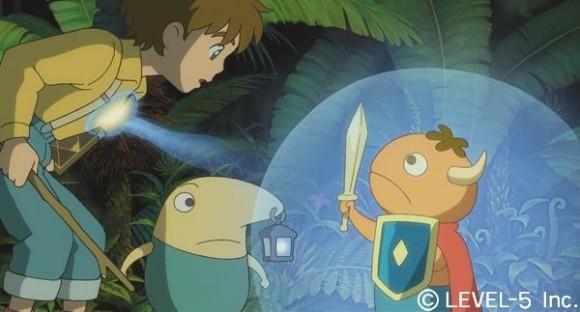
Namco Bandai announced that it would localize Level-5 and Studio Ghibli’s role-playing game Ni no Kuni: Wrath of the White Witch for the United States and Europe in October 2011, just a little over a month before the game came out in Japan. On the one hand, it was a relief for fans of Hayao Miyazaki’s films like My Neighbor Totoro and of Level-5’s RPGs like Dragon Quest VIII alike. The original Ni no Kuni for Nintendo DS looked as sweet as actually going on a magical adventure since it came with a hardbound book of spells, but that game never made it out of Japan. On the other hand though, Namco said the PS3 version of Ni no Kuni wouldn’t be out in the west until 2013. The game was finished, so what was the hold up? Localization takes time said Namco Bandai. The fans scoffed. Sure it does, but more than a year?
There was no need to scoff. Namco Bandai swung through New York to preview its upcoming games. These were the same suspects that peopled Namco’s E3 booth, but it was the first time that I’d gotten an opportunity to sample No no Kuni. E3’s blaring lights and thumping bass don’t exactly make for an ideal setting to absorb a quiet RPG, let alone one as emotionally tender as Ni no Kuni. For those unfamiliar, the premise is more thoughtful than the usual RPG rigmarole of angular-haired teens saving the universe from a big monster. Oliver, Ni no’s lead, is trying to see his mother one last time after she’s passed away. Mr. Drippy, the stuffed animal she made him, comes to life and leads Oliver on an adventure to see his mom in “Ni no Kuni,” or “another world.”
Just translating the game’s dialogue and text wouldn’t have been enough for this game to elicit the emotional impact it should. It really needed to be localized, adapted and reconsidered for international audiences with different cultural expectations and social mores. From the brief session I played, the extra time Namco’s spent properly localizing Ni no Kuni has served the game well.

I tackled the first real quest area where Mr. Drippy leads Oliver to a wise old tree in the other world. The tree teaches Oliver some basic wizarding skills like how to cast fire and healing spells as well as ho to create monster companions. The first of these little cartoon beasts is the goofy caped swordsman pictured above.
The whole sequence is beguiling. Mr. Drippy’s ebullient Scottish expounding, the old oak’s patient baritone, and Oliver’s enthusiastic credulity—The acting and dialogue are of a higher quality than in some of the Ghibli films that have been localized for the West. The effort is obviously unfinished as well. Even in this early portion of the game, there are chunks of Japanese text, as when you walk into a new area and its name washes across the screen.
It’s harder to say how the game will feel in battles over the full 40-hour adventure. After the charismatic story sequence, you set out into the field on an errand for the old oak, getting into fights with scrub monsters on the way. Oliver doesn’t fight alongside his first monster pal, but switches out with him as one or the other weakens. It’s a weird rhythm for an RPG, and at first it feels slow, but after just gaining just a few levels from fights raising basic stats, the battles become more fast paced. They are challenging too; forget to switch out to a healthy partner and you can die all too quickly. This is only the basic feel of Ni no’s skirmishes though. Later on, as your stable of monsters and their skills grow, it will no doubt feel very different. I didn’t even have a chance to play around with its Kingdom Hearts 3D; Dream Drop Distance-style monster raising portions where you feed and play with your monsters to grow their skills.
Half an hour with an RPG is no way to judge its overall quality. My take away from this preview session was simple: Ni no Kuni looks as wonderful as it did when it was still a Japan exclusive, but Namco Bandai and Level-5’s slow, deep localization will make it perfect for the West.
The fall blitz is just starting but it’s hard not to feel like the best games on the horizon are waiting in 2013.


